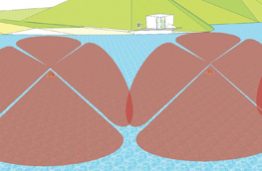Project code: SME-2011-1-286875
ES programme: Framework Programe 7 (FP7)
The objective of the project
To develop a chemical free, low maintenance ClearWaterPMPC system, based on ultrasound technology, which will be able to destroy precisely the algae species that happen(s) to be present at any given time.
Problem
Blue-green algae represent a group of ancient bacteria, known as Cyanobacteria. They give rise to a distinctly foul odour and are also known to produce toxins. These toxins can cause various illnesses such as skin irritation and paralysis, and some are even suspected to be involved in the occurrence of liver cancer. Where surface water is used for drinking purposes, blue-green algae in water reservoirs may also endanger the supply, because toxins can dissolve in the water and escape conventional treatment. Traditional algae controlling methods (e.g. aeration, chemical or biological additives, ultrasound waves and other methods) are not sufficiently effective. There are high labour costs associated with the need for frequent maintenance and dosage. The methods are often too expensive for large areas. Another major concern with chemical or biological additives is their environmentally hostile impact on other species of aquatic ecosystems.
Ultrasound institute
Is responsible for developing and testing the ultrasound acoustic system. Ultrasound institute is developing specialized piezoceramic transducers in flexural vibration with a wide range of operating frequencies for algae destruction. In addition, Ultrasound institute is researching and designing a self-cleaning function for the transducer and is responsible for designing the ultrasonic generator.
Project partners
LG Sound (Nethernlands), SinapTec (France), Informasjonskontroll AS (Norway), Time Kommune (Norway), Klepp Kommune (Norway), Teknologisk Institutt (Norway), Hellenic Centre for Marine Research (Greece), Ultrasound Institute, Kaunas University of Technology (Lithuania), Institute of Meterology and Water Management (Poland).


